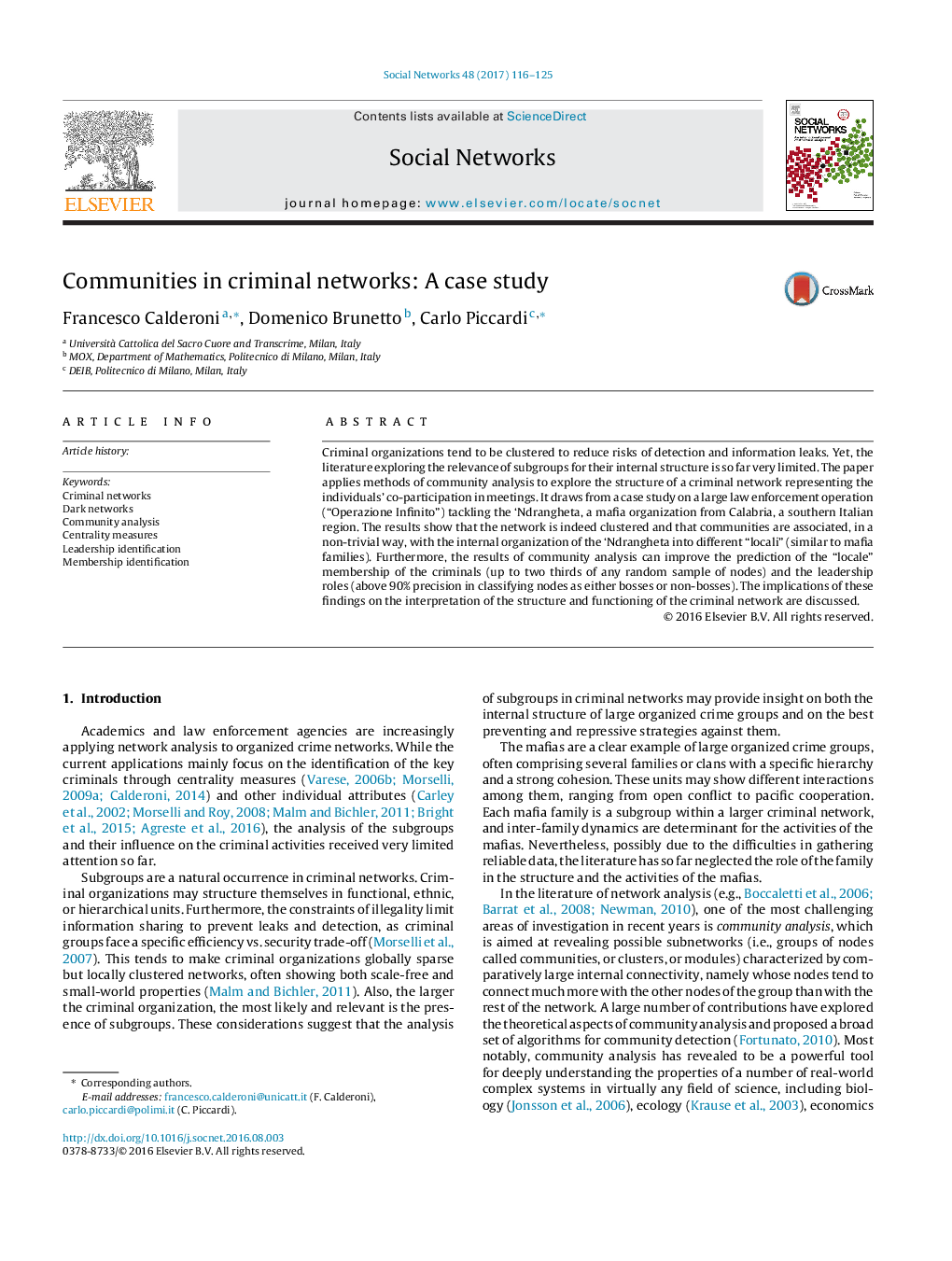| Article ID | Journal | Published Year | Pages | File Type |
|---|---|---|---|---|
| 7538397 | Social Networks | 2017 | 10 Pages |
Abstract
Criminal organizations tend to be clustered to reduce risks of detection and information leaks. Yet, the literature exploring the relevance of subgroups for their internal structure is so far very limited. The paper applies methods of community analysis to explore the structure of a criminal network representing the individuals' co-participation in meetings. It draws from a case study on a large law enforcement operation (“Operazione Infinito”) tackling the 'Ndrangheta, a mafia organization from Calabria, a southern Italian region. The results show that the network is indeed clustered and that communities are associated, in a non-trivial way, with the internal organization of the 'Ndrangheta into different “locali” (similar to mafia families). Furthermore, the results of community analysis can improve the prediction of the “locale” membership of the criminals (up to two thirds of any random sample of nodes) and the leadership roles (above 90% precision in classifying nodes as either bosses or non-bosses). The implications of these findings on the interpretation of the structure and functioning of the criminal network are discussed.
Related Topics
Physical Sciences and Engineering
Mathematics
Statistics and Probability
Authors
Francesco Calderoni, Domenico Brunetto, Carlo Piccardi,
